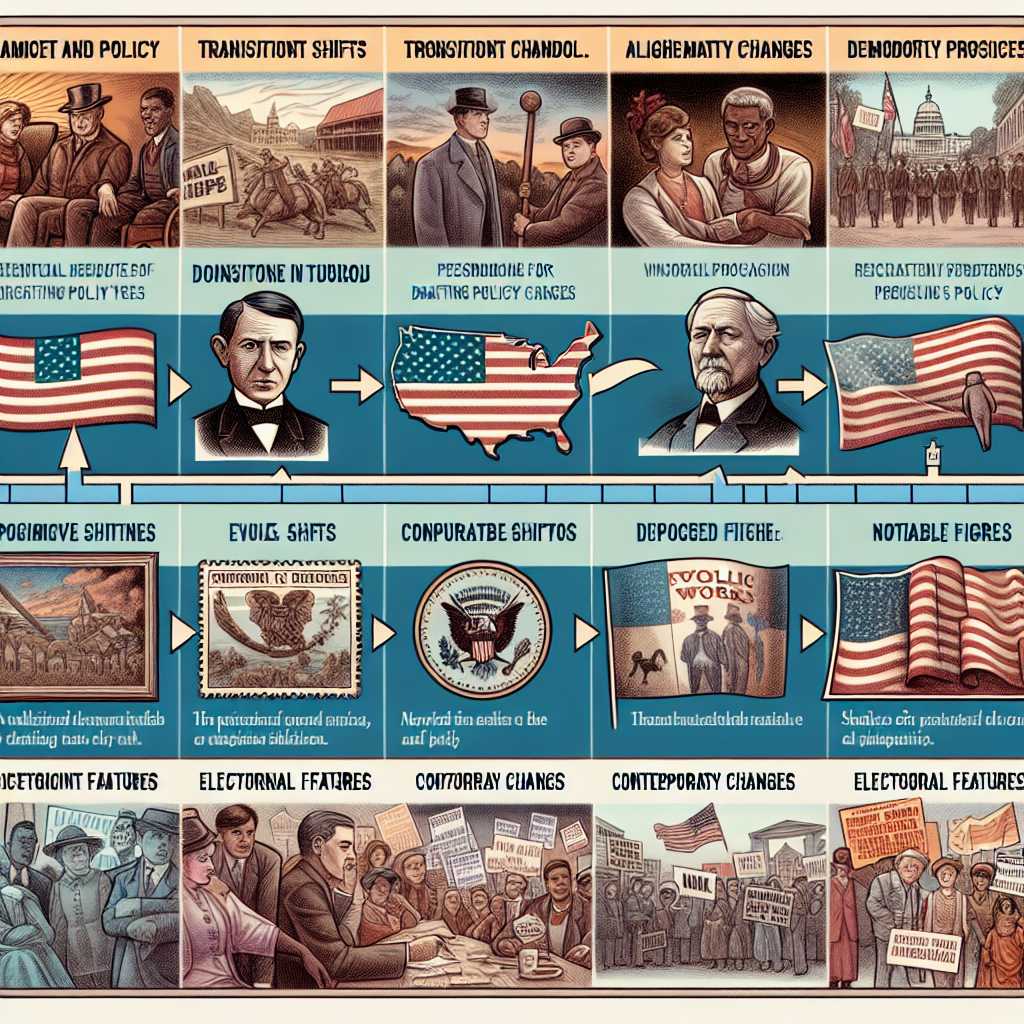The Democratic Party: Analyzing its History, Ideology, and Influence in American Politics
The Democratic Party stands as one of the two major political parties in the United States, the other being the Republican Party. Its ideology, historical evolution, and influence on American politics are crucial to understanding the current political landscape. This article aims to provide a comprehensive exploration of the party’s development, key policy stances, electoral engagement and strategy, and notable individuals who have contributed to shaping its identity.
Historic Foundations of the Democratic Party and Early Years
The Democratic Party’s roots can be traced back to the early 19th century with the formation of the Democratic-Republican Party by Thomas Jefferson and James Madison. Initially established in reaction to policies of centralization and federal power endorsed by Alexander Hamilton, Jeffersonian democracy emphasized agrarianism, states’ rights, and a limited federal government. The party eventually split into factions; by the 1830s, one of these factions had morphed into what is recognized today as the Democratic Party under the leadership of Andrew Jackson.
Jacksonian democracy broadened participation towards greater democratic inclusion (of white males) and introduced a staunch opposition against privileged Eastern elites. The bank wars, Indian removal policy, and emphasis on populism set foundational stones for the party’s future path.
Transition and Turmoil: The Civil War and Reconstruction Era
The Democratic Party’s trajectory altered significantly around the time of the Civil War. In the 1850s, conflicting stances on slavery caused a severe split within the party, with Southern Democrats staunchly supporting it and Northern Democrats showing varied levels of opposition. The party’s Southern sector hoped to safeguard slavery and promote states’ rights while facing strong abjections from abolitionists and other anti-slavery entities. During this period, the Republican Party arose as a counterforce which eventually assisted in leading the nation through Civil War under Abraham Lincoln’s presidency.
After the Civil War during the Reconstruction era, Southern Democrats were associated with supporting segregationist policies and opposing Reconstruction efforts that sought to provide civil rights to newly freed African Americans.
Alignment Shifts: The 20th Century Progressive Influences
The 20th century marked significant shifts for the Democrats with figures like Woodrow Wilson and Franklin D. Roosevelt incorporating progressive thoughts meant to tackle economic and social inequality. FDR’s New Deal was particularly transformative, catalyzing an ideological shift within the party toward advocacy for a more robust social safety net, labor rights, and economic regulatory frameworks. These progressive policies staidly realigned the party closer to supporting an active governmental role in providing for societal welfare.
During this period, Northern Democrats began actively including African American rights in their advocacy—a pivot stance that contributed to growing sectorial dissonance with Southern Democrats.
Contemporary Changes: Civil Rights Movement and Beyond
From civil rights movements in the ’60s through hempward political changes in each subsequent decade, Democrats often found themselves realigning priorities to address emerging societal challenges. Notably, it began losing its traditional grip on the South with many ‘Dixiecrats’ switching alignment after landmark civil rights legislation passed under Democratic presidents John F. Kennedy and Lyndon B. Johnson.
As time moved forward so did Democratic policy points which ranged from advocating for environmental conservation, universal health care proposals – such as those promoted by Hillary Clinton during Bill Clinton’s presidency – to supporting incremental progress toward LGBTQ rights.
Electoral Features and Political Strategies
Democrats have historically been known for their robust electoral presence in urban areas offering platform points relevant to more densely populated communities seeking protections for varying populations. In national politics, Democrats have transitioned focus towards broadening their appeal across diverse demographics expanding their electorate base; these strategies saw significant examination during Barack Obama’s presidential campaigns which energized young voters along with minority groups.
Today’s Democratic platform continues advancing moderate-to-progressive reforms across many sectors including education reform, economic stimulus plans diverging favorably from austere budgets measures often associated with Republican alternatives.
Notable Democratic Figures and Presidents
The Democratic Party has seen multiple influential leaders including but not limited to Franklin D. Roosevelt who served four terms as president spearheading key national recoveries; John F. Kennedy offering fresh perspectives shown vigorously in civil liberties progression; also recent heirs Barack Obama heralding post-partisan rhetoric though inheriting divise frontiers needing adept navigation.
Notes
Image Description: A timeline graphic illustrating key moments in Democrat history might have images of Thomas Jefferson, Andrew Jackson, flags representing key policy changes or period-relevant iconography such as Civil War symbols under “Transition and Turmoil,” a New Deal postage stamp or Works Progress Administration poster under “Alignment Shifts,” photos of Civil Rights marches or iconic Democratic presidents under “Contemporary Changes,” renderings of diverse voter demographics under “Electoral Features,” followed by pictures or drawings of notable figures like FDR or Obama under “Notable Democratic Figures.”
